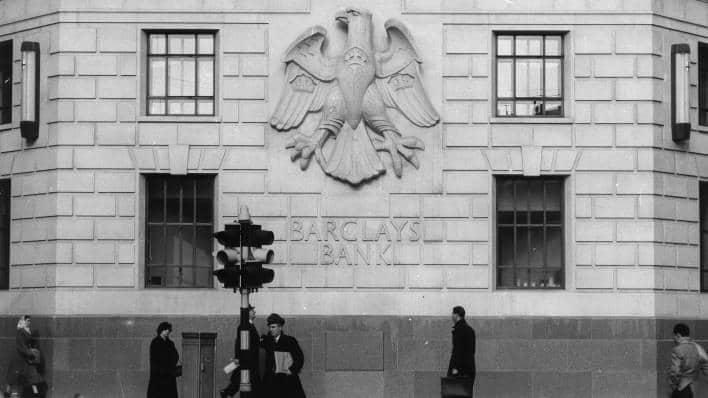
Barclays Group Archives
Barclays Group Archives are home to the records of Barclays PLC and its predecessors, dating from 1567 to the present day
Business historian Professor Leslie Hannah talks about Barclays' long history and its role in society during this time.
Barclays has a rich and long history in London, dating back to the 17th century. John Freame, to whom Barclays' history is usually traced, traded as a goldsmith in Lombard Street from 1690 with Thomas Gould. The 'Barclay' names entered the business in 1736 when James Barclay, who had married John Freame's daughter Sarah, joined the partnership and his name took precedence.
54 Lombard Street, London
In an age when few people could read, signs were used to identify buildings; when buildings changed hands, the sign would remain. The Barclays business moved to the sign of the Black Spread Eagle in 1728, which later became numbered as 54 Lombard Street. As a result, Barclays became identified with the Spread Eagle, which was adopted as its official coat of arms in 1937.
However, through its merger with Martins Bank in 1969, Barclays can claim even older links with the capital. The earliest origins of Martins in London lie in the 1560s with the famous Elizabethan merchant, banker and diplomat Sir Thomas Gresham. Sir Thomas, who served as King Edward VI's banker, established an early trading house on Lombard Street. His family crest was the Grasshopper - the sign by which his bank became known.
The Martin association with the bank started when Thomas Martin was apprenticed to Charles Duncombe in 1694. Martin married Duncombe's niece and took over his share in the business on the latter's death in 1699. The company was renamed Stone and Martin in 1706, and the name became associated with the bank from then onwards.
Amid an expanding British economy that needed bigger banks, Martins merged with the Bank of Liverpool in 1918. With the creation of The Bank of Liverpool and Martins, 68 Lombard Street became the London office, with Liverpool preferred for its head office.
